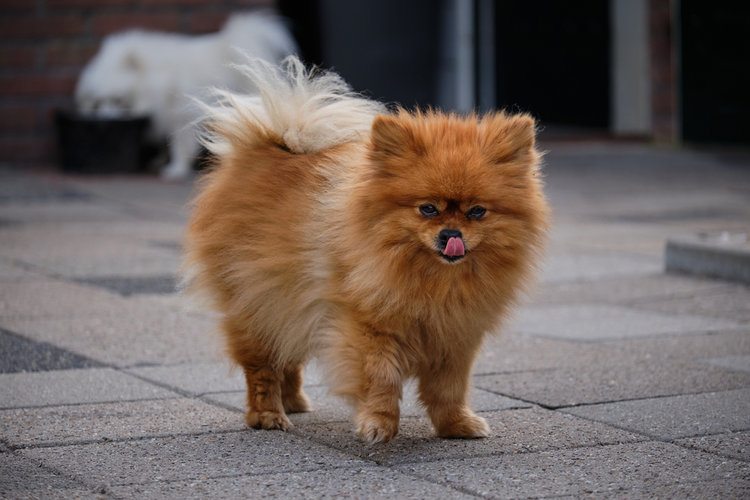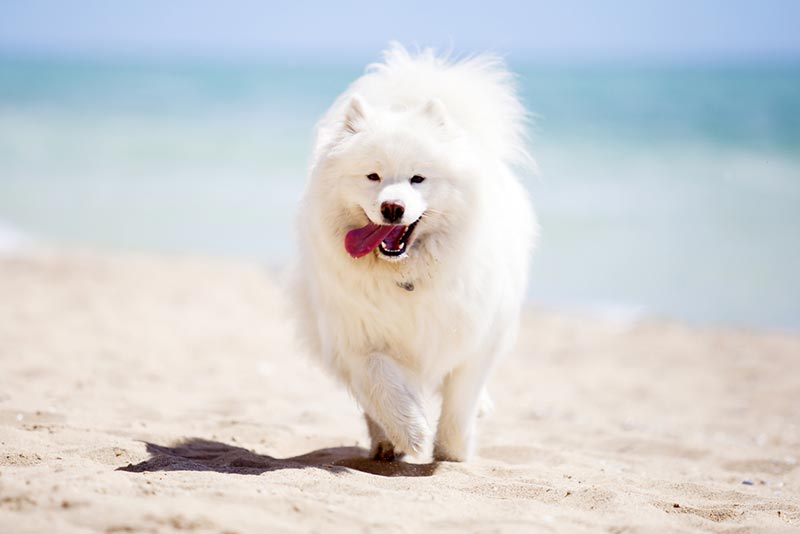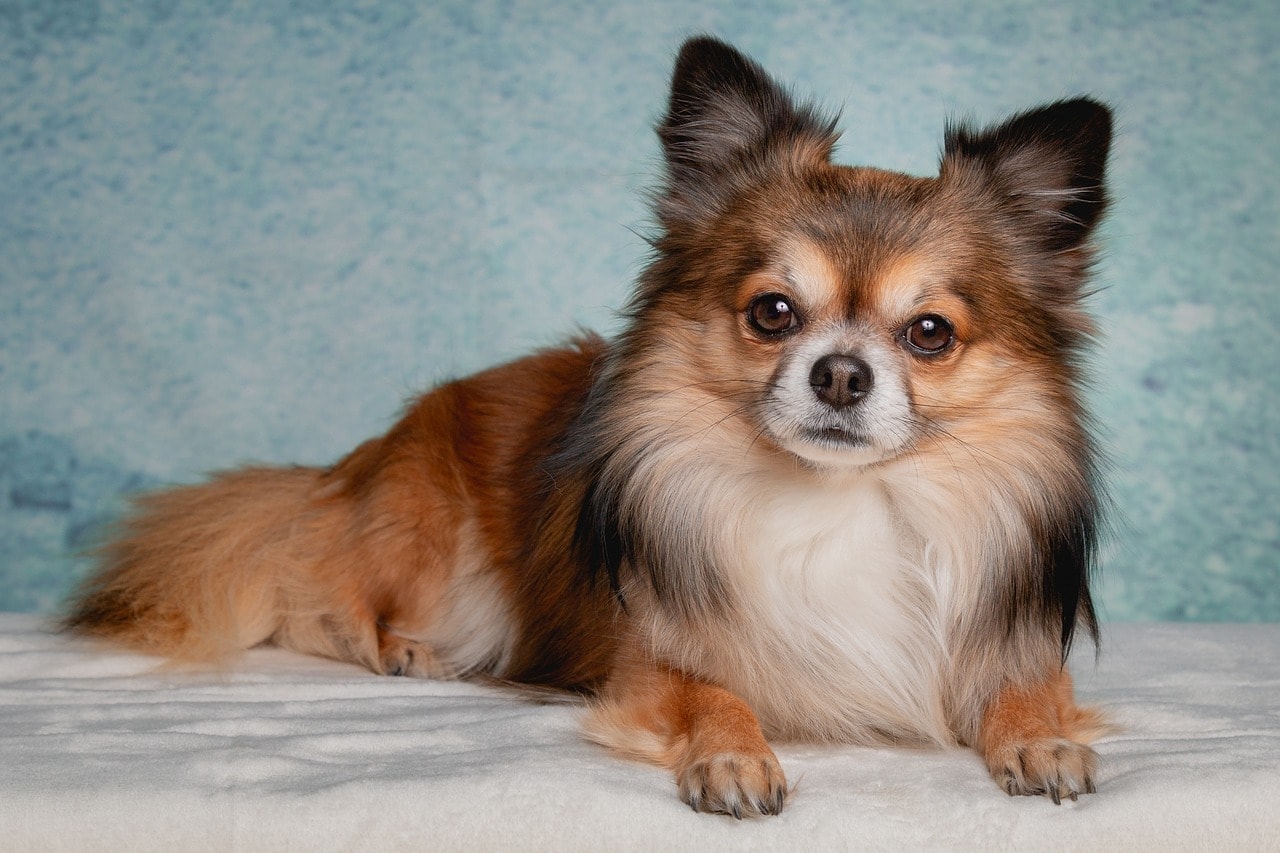Orange Pomeranian: Facts, Origin & History (With Pictures)
By Jessica Kim
Updated on

Pomeranians come in many different colors and coat patterns, but the iconic orange Pomeranian is one of the most common kinds that you’ll come across. This dog breed is extremely popular due to its spunky personality and relatively easy care needs.
Orange Pomeranians have lived alongside humans for centuries, so their rich and fascinating history is well-documented. Here’s what you need to know about this wonderful companion dog.
The Earliest Records of Orange Pomeranians in History
Pomeranians have been around before the 1760s, and they were first developed in the province of Pomerania in Germany. They belong to the Spitz family of dogs, and the original ancestors of this breed probably weighed around 30 pounds.
Pomeranians eventually moved to England in 1767 when Princess Charlotte, the princess of Mecklenburg-Strelitz, married King George III. She brought her two pet Pomeranians, Phoebe and Mercury, with her to England. Paintings of these dogs can be found, and they appeared to be fluffy and weighed around 20 pounds.
Orange Pomeranians continued to travel and spread to other European countries. It’s believed that they made their way to the United States sometime in the late 1880s.

How Orange Pomeranians Gained Popularity
It’s believed that orange Pomeranians were always fairly popular. Some lived with famous figures, including Martin Luther, Michelangelo, and Isaac Newton. Making appearances with famous people only drove this dog’s popularity.
The love and enthusiasm of Queen Charlotte and her granddaughter, Queen Victoria, also protected orange Pomeranians. They ensured that the breed continued to develop and participate in dog shows and receive recognition.
Over the years, the size of Pomeranians was bred down so that today’s orange Pomeranians weigh between 3-7 pounds. Some larger orange Pomeranians can weigh up to 12 pounds.
Early Pomeranians were mostly white, black, blue, or chocolate. However, an orange Pomeranian appeared in dog shows around the 1920s, and more colors were subsequently added to the breed’s standards.
Orange Pomeranians continue to be popular. They consistently rank in the top 50 most popular dog breeds in the US. Some celebrities that have had Pomeranians are Hilary Duff, Gwen Stefani, and David Hasselhoff.
Formal Recognition of Orange Pomeranians
The first Pomeranian to be entered in the American Kennel Club’s (AKC) stud book was Dick in 1888. Then, the American Pomeranian Club was formed and was accepted as a member club of the AKC in 1909. Pomeranians also became recognized by the United Kennel Club (UKC) in 1914.
Orange coats are included in the AKC breed standards for Pomeranians, and orange Pomeranians are allowed to compete in shows. Orange sable Pomeranians are much rarer, but they’re still recognized and are able to compete.
The first Pomeranian to win the Westminster Dog Show is Great Elms Prince Charming II. Great Elms Prince Charming II was an orange Pomeranian that weighed just 4.5 pounds. He won Best in Show in 1988 and fit inside the trophy he’d won.

 Top 3 Unique Facts About Orange Pomeranians
Top 3 Unique Facts About Orange Pomeranians
1. Orange Pomeranians Can Be Born White
Some Pomeranian puppies that are born white won’t always remain white. As they mature, they can develop a cream or orange coat. Most Pomeranian puppies that turn orange often have a more cream-colored coat than Pomeranian puppies that keep their white coat as they mature. The difference is subtle, but experienced breeders are able to make fairly accurate predictions of their puppies’ coat colors.
2. Orange Pomeranians Descended from Large Sled Dog Breeds
Despite being categorized as a toy breed, orange Pomeranians are actually close relatives to large sled dogs. Its closest relatives include the Norwegian Elkhound, Schipperke, German Spitz, American Eskimo Dog, and Samoyed.
The breed’s standard weight was about 20 pounds until the late 1880s. It’s believed that Queen Victoria visited Italy around this time and met a small Pomeranian that weighed just 12 pounds. It’s likely that this dog inspired the selective breeding of Pomeranians to a smaller size.

3. Orange Pomeranians Can Be Targeted as Prey by Wild Animals
It’s important for orange Pomeranian owners to be aware of their surroundings. These dogs can be targeted by predatory animals due to their small size and fluffy coats. Owls, eagles, and hawks can swoop down, thinking that they’re rabbits and other natural prey. Orange Pomeranians can also be hunted by coyotes.
 Does an Orange Pomeranian Make a Good Pet?
Does an Orange Pomeranian Make a Good Pet?
Orange Pomeranians often make wonderful companion dogs. They’re brave and fiercely loyal, and they’re able to live in apartments due to their small size. Just keep in mind that they’re pretty energetic dogs, so they’ll still need at least 30 minutes of daily exercise and plenty of mentally stimulating activities. They love to explore and will appreciate daily walks where they can make stops to sniff around.
This dog breed is a relatively good dog for first-time dog owners. However, it’s important to train them as soon as possible. They can be stubborn at times and have a mind of their own, so owners must provide firm and fair training. Since they’re so small, it’s easy to spoil them and reinforce any negative behavior by picking them up.
Orange Pomeranians can be patient with children, but they may do better with older children because they can get injured easily due to their small size.
Final Thoughts
The modern orange Pomeranian looks very different from its ancestors. These dogs have been popular companions for many people, and their small size continues to allow them to travel everywhere with their families. However, don’t let their small size fool you. These dogs have big and brave personalities. They often make life more fun and exciting, and we’re certain that they’ll remain popular dogs for many more years to come.
See Also:
- Throwback Pomeranian: Facts, Origin & History (With Pictures)
- Brown Pomeranian: Facts, Origin & History (With Pictures)
Featured Image Credit: Pomeranian orange-sable Coco (Image Credit: Rob Hanson Wikimedia Commons CC 2.0 Generic)

 Top 3 Unique Facts About Orange Pomeranians
Top 3 Unique Facts About Orange Pomeranians










